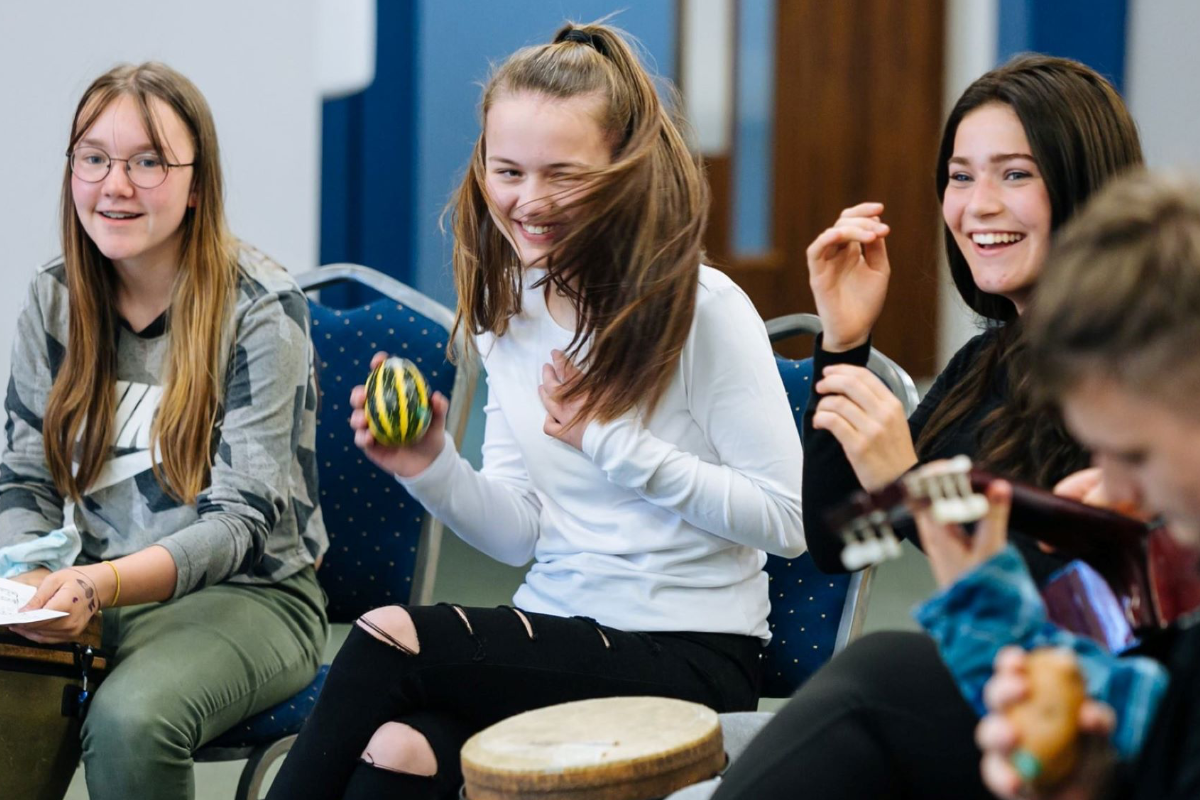
Photo: Joe Singh
Fostering musical talent
There’s a perception that musical talent is about instrumental proficiency, so the stereotype of the child prodigy persists. But Hester Cockcroft says that denies the potential of those with no access to music.
Everyone in music education knows it, and every few months another report confirms it – financial barriers are often the biggest obstacle to young people progressing in music.* Children from low-income families are also much less likely to engage in music activities outside school.
As the Social Mobility Commission report Unequal Playing Field (2019) says: “Music… is clearly the preserve of more affluent family households”. Their data shows that children from the wealthiest families are three times more likely to participate in these activities than their peers from less well-off backgrounds.
Yes, learning a musical instrument is expensive and it’s not just tuition. It’s getting hold of that instrument in the first place, travelling to lessons or rehearsals, buying accessories, accessing technology, entering exams, auditioning for higher education. The list is long and, if you’re from a low-income family, the expense is often just too much, particularly in the current cost of living crisis.
So what to do about those children who have never had the chance to pick up an instrument because it costs too much? What about their talent and potential? Musical talent is everywhere, but opportunity isn’t. Young people should not be denied the chance to explore and fulfil their potential because they’re from a low-income family.
A diverse music industry is essential for a thriving sector
While children from wealthier families may have private instrumental lessons, less well-off children are limited to their school’s musical offering, largely just short term, group tuition at primary school.
So, it is even more imperative that, when these opportunities are provided, their teachers – whether class or visiting instrumental teachers – have some useful tools to identify musical potential and support it. Without them, the musical talent of young people from low-income backgrounds is far less likely to be identified, getting in the way of a more diverse talent pipeline, and in the longer term, a more diverse music industry, which is essential for a rich and thriving cultural sector.
Awards for Young Musicians (AYM) exists to help. Our Identifying Musical Talent and Potential programme (ITP) is designed to address exactly this problem. ITP was formed after AYM initiated an action research programme, funded by Youth Music, looking at how to spot musical potential in a group of young people.
Identifying potential
As lead musician facilitator Hugh Nankivell says: "We were interested in how to identify potential early in a child's musical journey before they'd had significant exposure to music-making or nurturing of their abilities. We wanted to investigate how potential could be identified across musical styles without favouring any particular one. We were also interested in how you could identify potential from within a group activity across a variety of ages and settings."
We asked music leaders and others in music education to analyse film footage of Hugh leading musical activities with young people and look for musical potential. These were then distilled into eight key facets of musical potential, around which the ITP programme was built.
These facets aren’t about technical proficiency on an instrument – they’re more fundamental such as ‘absorption’ and ‘inclination to explore’. They’re also applicable to both disabled and non-disabled children. Colleagues across the arts will recognise these facets as they’re just equally likely to be spotted in dance or theatre.
Playing a proactive role
ITP has two strands: face-to-face or online training and a series of film resources highlighting the facets of musical potential. A team of facilitators uses creative musical activities to help teachers identify potential in young people, in a wide range of contexts from schools to young carer groups.
As Hugh explains: “During the training, teachers participate in music making activities they can then lead with their classes. These are also seen ‘in action’ through our films. This reinforces to teachers the effectiveness of the creative music making of the type we use to spot potential in groups. We encourage teachers to film themselves with their groups and analyse the footage, so they can see by stepping back how musical potential is being exhibited by their group.”
ITP helps teachers in AYM’s partner hubs identify children with musical potential from low-income families for both our England-wide Furthering Talent programme or their own subsidised or free musical progression initiatives.
And our expanded training has come at just the right time. The refreshed National Plan for Music Education states: ‘We would like to see more primary school teachers playing a proactive role in identifying children who could benefit from one-to-one or small-group instrumental or vocal tuition, over and above their classroom experience.’ ITP is here to do just that.
To date we’ve worked with over 1,500 music educators and 18 Music Hubs across England. And thanks to a strategic grant from Arts Council England’s Hub Support Programme we’re currently offering the training free, to a further 45 Music Hubs, for both instrumental teachers and class teachers. So if you’re an interested Hub get in touch.
Hester Cockcroft is Chief Executive of Awards for Young Musicians.
*BRSM Making Music Report 2021
Join the Discussion
You must be logged in to post a comment.